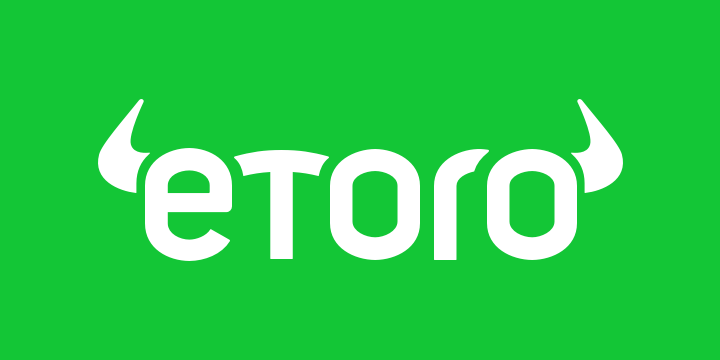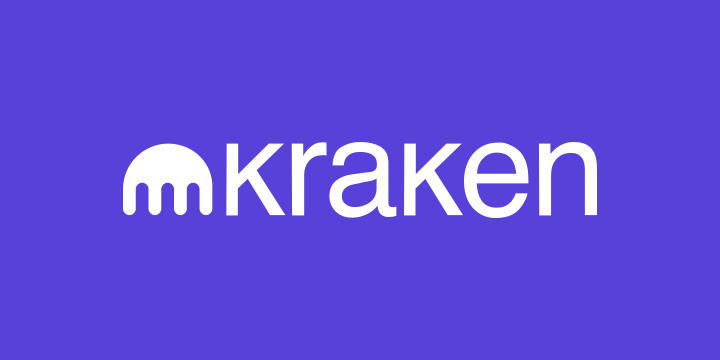What is Ethereum Classic & How Does it Work? ETC for Beginners
...
Ethereum Classic (ETC) is a permissionless, decentralised, secure, and censorship-resistant blockchain, which is the continuation of the original Ethereum stack launched in 2015. After the DAO controversy, the Ethereum project split into two – Ethereum (ETH) and Ethereum Classic over ideological differences and how to resolve them. The underlying objective and infrastructure are the same – to provide a public platform to run smart contracts and decentralised apps or dApps. ETC denotes the Ethereum Classic token.
It runs on an unaltered version of the original Ethereum blockchain. Its philosophy is to put the code above everything else, and if there are any exploits or compromises, they shouldn’t be removed through hard forks which damage the integrity of the code. The teams behind ETC believe in maintaining absolute immutability that doesn’t welcome human interference at any cost.
Why Was Ethereum Classic Invented?
The original Ethereum blockchain launched a complex smart contract called Decentralised Autonomous Organisation (DAO), a digital venture capital created to fund dApps. Anyway, whoever wanted to have a say in terms of what dApps should be financed through the Ethereum platform was required to purchase DAO Tokens using Ether. Having DAO tokens meant you were now a part of the DAO smart contract.
For any dApp to get the required funds, it needed 20% votes from DAO token owners. The versatility and transparency of this smart contract allowed Ethereum to sell $150 million worth of DAO tokens within weeks. Once you bought into the DAO system, getting out was a bit tricky and had a loophole. Using Split Function, you would be able to get back your Ether, but you weren’t allowed to withdraw it for 28 days. In June 2016, a hacker used the loophole to steal one third i.e., around $50 million worth of Ether from people trying to get out of DAO.
To fix this issue, the majority of the Ethereum community, along with its founders, agreed on creating a hard fork. It would roll back the blockchain to before the hack took place, allowing them to recover the $50 million that was stuck in the system and give them back to the people. And this is where the ideological split happened. Some people in the Ethereum Foundation didn’t see eye to eye with this approach and viewed it as a central authority subverting the integrity of the code and the ethos of decentralisation. They decided to continue to use the original blockchain instead of the updated one. This is why it’s called Ethereum Classic.
How Does Ethereum Classic Work and What Technology Is Behind It?
Ethereum Classic is quite similar to Ethereum. It relies on a blockchain that isn’t only designed to replace payments but creates smart contracts and apps with which users can own, transfer ownership of, and interact with. Allowing Turing Complete programming language means developers can write apps that are automated and can be supervised through conditional outcomes.
Like all the other blockchains, it maintains a complete record of transaction history in a shared database. Moreover, it also has the record of the most current state of all the smart contracts powered by the blockchain and users’ balances, which can be transferred digitally to another user’s wallet. All of the activity is powered by ERC-20 tokens, which can be mined through the Proof of Work process. Due to the split, it will not receive the ETH 2.0 update.
Is Ethereum Classic Real Money?
It should be kept in mind that ETC isn’t primarily a payment mode but a decentralised blockchain that enables the creation of programmable applications and contracts. Compared to the top cryptocurrencies, it has a weak penetration in the consumer market. It’s only accepted by a handful of brands, including Playhub Casino, I49 Seed Bank, Bitcoin Investment Spheroid Universe, MrChrissy VPN, and Guarda Wallet. It’s far from being a viable currency.
The primary difference between a digital currency like BTC and ETC is that Bitcoin is designed to be a conventional currency alternative. On the other hand, ETC is a token that mainly exists to power the Ethereum Classic blockchain, including smart contracts, dApps, transactions, and decentralised autonomous organisations (DAOs). That’s why in the ERC-20 token ecosystem, ETC is considerably more popular.
Fees & Expenses
Compared to ETH, Ethereum Classic’s average transaction fee is pretty nominal. However, its price has also remained under $8 during the last few months. At the time of writing, the average transaction fee of ETC is $0.0014, which was around the same mark the previous year except for a few temporary spikes. In January 2019, during the cryptocurrency boom, ETC experienced its highest average transaction fee around the $6 mark. Note that average transaction charges are determined in US dollars when miners process and verify transactions. The fee is dependent on multiple factors, including the demand for Proof of Work.
Moreover, the commissions and fees charged by several cryptocurrency platforms, including exchanges, differ significantly in terms of percentage and structure. Usual purchasing and selling using wire transfer will set you back around 0.5% to 2%. Quick buying through debit cards can be quite expensive as it can cost you anywhere between 3% and 10%. You might also have to pay for withdrawals and deposits. Remember that these are just general estimates, and fees may vary significantly depending on the crypto platform you’re using, geographical location, amount of ETC, and more.
What Are the Benefits of Ethereum Classic?
It has all the advantages of a blockchain, but it offers a few specific to its technology. These benefits include:
Immutability – All transactions, once written and recorded in the blockchain, can’t be altered, removed, or changed. This was the principle that forced the split between ETC and ETH. This doesn’t only maintain a high level of decentralisation but enforces greater security and code integrity.
Decentralised – It relies on a Proof of Work consensus procedure, which means there’s no need for an intermediary or a central authority. Transactions can take place without them, and smart contracts are self-executable.
Quick & Affordable Transactions – Due to an automated process of verification that doesn’t require a third-party involvement, your transactions are processed and verified quickly in no time. That’s not the only upside, as it makes your transactions highly economical as well.
High Reliability – Ethereum Classic blockchain has been handling a wide variety of applications, smart contracts, and transactions for the last five years without any interference from third parties, downtimes, frauds, and censorships. This speaks to its reliability.
Programmable – The key benefit offered by Ethereum Classic blockchain is that it’s programmable, allowing developers to write decentralised apps or dApps and create smart contracts. These apps can include financial services, games, smart contracts, and more.
Can Ethereum Classic Be Used Anonymously?
The anonymity feature of cryptocurrencies is overstated. Although indeed, the decentralised blockchain doesn’t have any personal data stored, if you’re using ETC or any other cryptocurrency, you’ll have to go through trading and exchange services that require you to provide personal information. Some of the most reliable crypto exchanges have to comply with Anti Money Laundering (AML) and Know Your Customer (KYC) regulations, so they have no choice but to collect personal data. Increasing regulations for cryptocurrencies has also diminished anonymity.
You would maintain a certain level of anonymity if you only use the blockchain. Even then, there’s a digital footprint and meta information that can lead anyone back to you if they try hard enough. So, if you’re looking for absolute anonymity with ETC, unfortunately, it’s not there. Maybe a few exchanges would allow you to buy and sell digital currencies, but they pose a significant risk, and sometimes they’re just scams.
How Safe Is Ethereum Classic?
Quite safe. Every transaction that occurs on the Ethereum Classic blockchain is made extremely secure by cryptographical encryption. Due to the way that the Ethereum blockchain network has been structured, it has a high number of nodes to verify transactions at a rapid pace. The majority of the cyber-attacks generally target poorly programmed dApps or smart contracts, instead of the blockchain. However, it won’t have the updated security of ETH 2.0, which is moving to a Proof of Stake consensus mechanism.
What Teams Are Working On Ethereum Classic Development
To keep the ETC blockchain alive and updated, five official teams are actively pursuing their goals. These teams include the following:
Ethereum Classic Consortium
It’s an association formed by organisations, businesses, and individuals belonging to different crypto communities to promote ETC’s fundamental values, which include resistance against censorship, absolute immutability, and decentralisation.
ETC Cooperative
This team’s main objective is to lead ETC protocol development and ensure the creation of a mature ecosystem achieved through accelerated adoption of ETC by consumers and commercial entities, enhanced collaboration between stakeholders, and mature transparency and governance.
ETC Core
This is the lead development team of the ETC project, which has been tasked with maintaining the Core-Geth client, EVM-LLVM backend project, and infrastructure tooling and specs. The team also ensures protocol research and timely updates.
ETC Labs
This is the financial wing of the ETC project with the primary objective of acquiring required funding and forging long term relationships with institutions and organisations to deal with the challenges.
Gödel Labs
It is a blockchain venture studio that is working on Web3 and creating decentralised systems. They have collaborated with ETC to launch decentralised applications, solutions, and products.
Other teams are currently contributing to the project, including Ethereum Foundation, Parity Technologies, ETC Consortium, ETCDEV, ETC Cooperative, Grayscale, Commonwealth, POA Network, Chainsafe, Core Paper, Second State, and PegaSys.
Which Financial Institutions Are Invested in Ethereum Classic?
Since ETC isn’t a payment alternative, many financial institutions have backed the Ethereum Foundation, which supports ETH and ETC. A few years ago, EEA or Enterprise Ethereum Alliance was established that featured big names like JP Morgan, Credit Suisse, MasterCard, ING, and more. However, Ethereum Classic is the less popular split of the blockchain and gets overshadowed by the attention and backing that its more famous sibling ETH receives.
Ethereum Classic Mining
ETC mining is pretty identical to Ethereum. It involves using computational power to determine the correct solution. Technically speaking, miners run distinct metadata of each block via a hash function that yields random strings of alphabetical and numerical characters of fixed lengths. If a miner finds a hash that complies with the target, they receive ETC tokens while each node on the Ethereum Classic network verifies the transaction, and the blockchain gets updated.
If you’re looking to mine the main version of Etherium, ETC, then check out our dedicated page on How to Mine Ethereum ETC.
Ethereum Classic Wallets
After you buy ETC, you can use a wide range of hardware and software wallets to keep your tokens safe and secure. Some of the secure wallets recommended by the Ethereum Classic website include:
Web Wallets
Squarelink, MyCrypto, MyEtherWallet, Portis
Browser Wallets
Saturn Wallet, Opera, Nifty Wallet, Brave, MetaMask
Hardware Wallets
Ledger, Trezor, HTC Exodus, Bitski, CootBitX, Ellipal, SafePal, Parity Signer, Signatory Client
Software Wallets (Desktop/Mobile)
ABRA, Alpha Wallet, AToken, Atomic Wallet, BTCPOP, Button Wallet, Citowise, Cobo, Coinbase Wallet, Coinomi, Cryptonator, Edge, Emerald Wallet, Ethos, eToro Wallet, Evercoin, Exodus, Guarda, HubrisOne, Huobi Wallet, Infinito Wallet, Jaxx Liberty, Midas Protocol, Ownbit, Trust Wallet, Zelcore Wallet, ZenGo
Is Ethereum Classic Worth the Investment?
If you look at the price chart of the ETC token, you will notice that it has been relatively stable compared to other popular cryptocurrencies. However, don’t let that stability lure you into a false sense of security as all digital currencies are highly volatile. Prices can plummet or surge at any moment without giving you enough time to make a decision.
This phenomenon, which is particularly unique to cryptocurrencies, makes it challenging to recommend investment with a high level of certainty. The best way to invest in Ethereum Classic (ETC) is with only an amount that doesn’t affect you financially and diversify your finances to manage your risks. It’s likely that ETC might be undervalued for what it is and may have a high growth potential in the coming months, but no investment comes with a hundred per cent guaranteed success.
Frequently Asked Questions
- Mineshop
- 1point9
- Giftcards.bidali.com
- Crypto-Games
- 1xBet
- Smarty Scripts
- COIN.HOST
- Snel.com
Alternative Cryptocurrencies
Elastos
Maidsafecoin
sweatcoin
FUNToken
Vertcoin
New

Here’s why Ethereum Classic (ETC) price could jump by at least 12%
13 April 2023 Ethereum Classic price has made a bullish break-out as cryptocurrencies rally. It jumped after the latest American…
Ethereum Classic price: ETC looks primed for sharp 22% decline
30 March 2023 Ethereum Classic price is down 2.5% in the past 24 hours. ETC has failed to ride broader…
Ethereum Classic confirms a trend shakeup. Here is the next price target
9 January 2023 Ethereum Classic rose by 5% on Monday to extend the gains made in the week The network…
Ethereum Classic eyes the $20 resistance level after its latest rally
5 January 2023 Ethereum Classic is the best performer amongst the top 50 cryptocurrencies by market cap today. ETC is…
Prévision de prix d’Ethereum Classic : ETC semble stable face à un Metacade (MCADE) qui ne cesse de monter
23 December 2022 Le Web3 est une industrie en développement constant, et l’action des prix de la crypto ont tendance…


